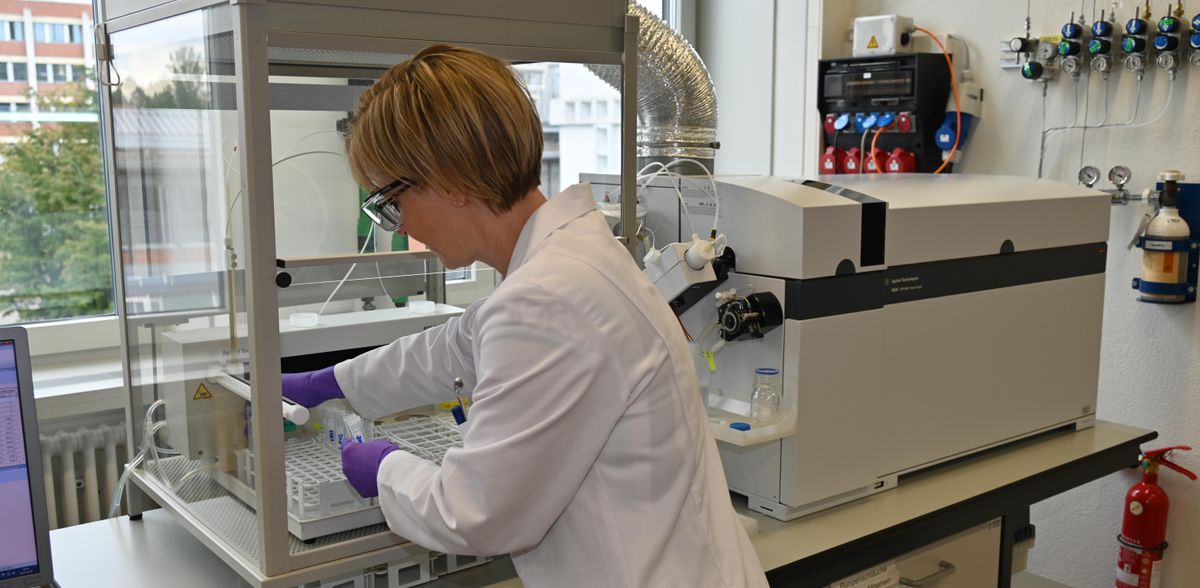Hazardous ingredients in batteries
Trust, but verify! A long and winding road to an innovative method
Advertisement
Although strict limits exist, old types of batteries can still contain too many hazardous ingredients such as mercury, cadmium and lead. The Federal Office for the Environment (FOEN) has therefore launched a control campaign. Empa has laid the foundations for this with a novel tailor-made method for analyzing heavy metals.
Our lives would be inconceivable without batteries as energy storage devices. They are practically everywhere and are used as starter batteries in cars, in industrial equipment, but also in everyday objects such as toys, watches, radios, laptops, phones, flashlights, hearing aids, and so on. The demand for batteries – including rechargeable batteries – is huge. And because of the high demand for raw materials used in electricity storage devices, they are already becoming scarce in some cases and thus more expensive. Therefore, intensive research is being conducted to replace scarce or even rare materials with more common ones.
What's more, some ingredients of certain batteries such as cadmium or lead are harmful to human health or even toxic. Here, too, science is looking for unproblematic substitutes. And indeed, there are promising new approaches to further improve the sustainability of batteries.
What's inside a battery?
Although many widely used battery types – such as Li-ion batteries – are already available on the market without heavy metals, there are still old battery types with heavy metals. In Switzerland, a wide variety of battery models are sold – mainly by major distributors. They differ, for example, in the materials used to manufacture them. Many are based on zinc-manganese or lithium ions; neither contains heavy metals. Both in Switzerland and in the EU, the trade and sale of batteries containing mercury (chemical: Hg) or cadmium (Cd) are severely restricted. There is a limit value for mercury in batteries of 5 mg/kg and of 20 mg/kg for cadmium. For a lead content of more than 40 mg/kg, a corresponding declaration on the battery or on the packaging is mandatory.
But what is the point of regulations if it is not possible to check whether they are being complied with? Until recently, there was hardly any way to check compliance in Switzerland; there was simply no reliable and recognized method for precisely determining the various elements being used in batteries.
Increased knowledge about batteries
A team from Empa's Advanced Analytical Technologies lab led by chemist Renato Figi was therefore commissioned by the FOEN to develop a method for analyzing the heavy metals mercury, lead and cadmium in various types of batteries. A task that turned out to be not that simple. This is because, unlike many objects that can simply be crushed to analyze their chemical contents in solution by various spectrometric methods, batteries cannot simply be shredded. Even attempting to open a power storage device can be quite dangerous. Again and again, there are accidents in which batteries have exploded during such manipulations.
Claudia Schreiner did not want to expose herself to this risk in the Empa laboratory. She therefore turned to an Empa colleague, a specialist in the field of battery safety. Marcel Held from Empa's Transport at Nanoscale Interfaces lab advised her first and foremost to carefully discharge all batteries to be examined. Only then should one dare to look at the "inner life" of a battery.
But not all batteries are created equal. There are countless different designs. Even if one battery looks like a twin to another from the outside, the construction inside can differ significantly!
And something else became apparent during the project: Potentially hazardous substances are not always found where one would expect them to be. They can also be found in the seemingly harmless sheathing.
A long and winding road to an innovative method
But the painstaking work in the laboratory paid off: Empa's innovative method can now reliably determine the ingredients of common batteries even in minute amounts. For analysis, the batteries must first be discharged and then separated. The various components of the different battery types are sorted and then dissolved by boiling under pressure using an acid mixture. In this way, the heavy metals dissolve and can be determined spectroscopically.
The method now allows it to monitor compliance with existing regulations. It is being used as part of a broad campaign by the FOEN. To ensure that the random samples of the different battery types provide as representative a picture as possible, around 80 different batteries will be selected over the course of the year and then analyzed at Empa. The cantonal laboratory in Zurich is in charge of the campaign; results are expected in 2024.






































































